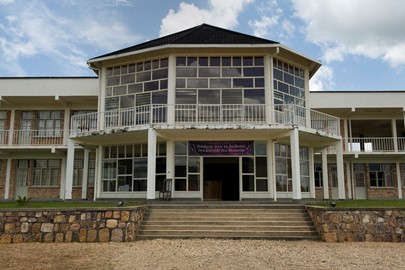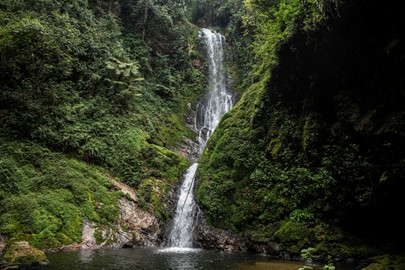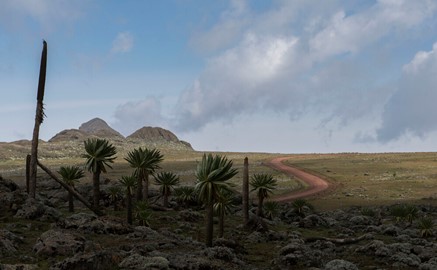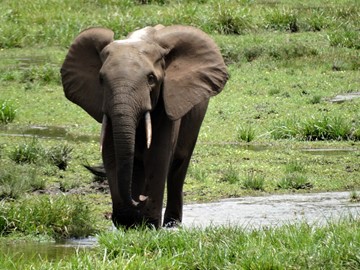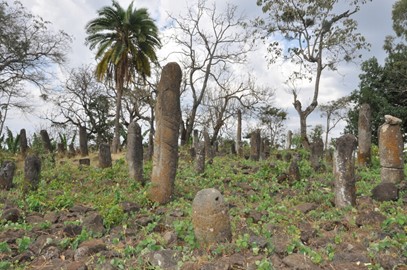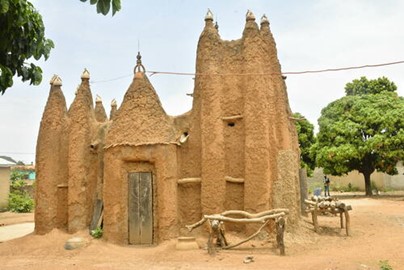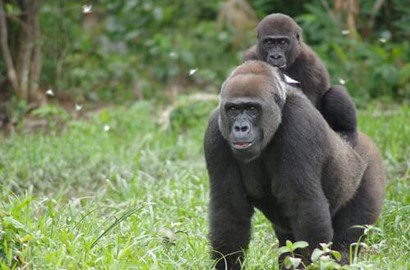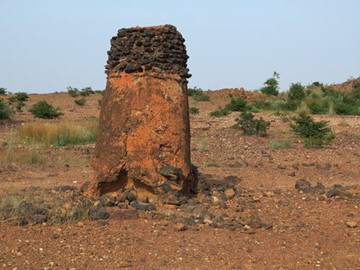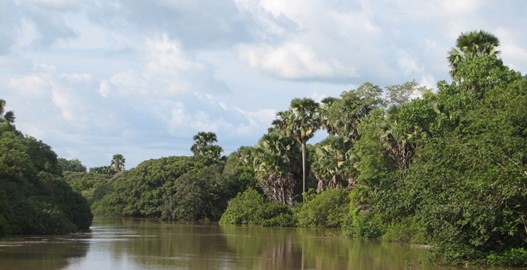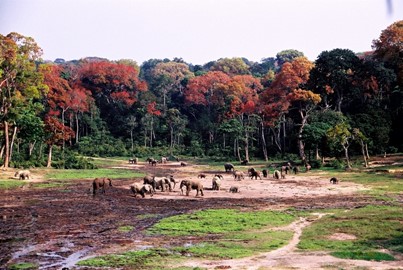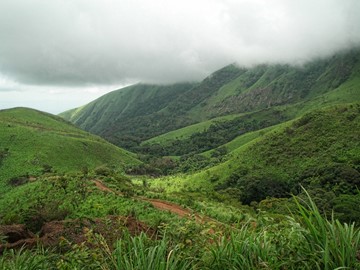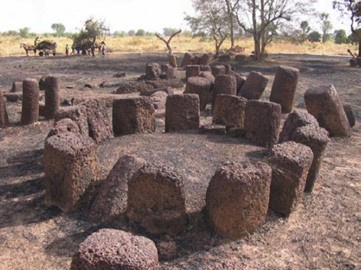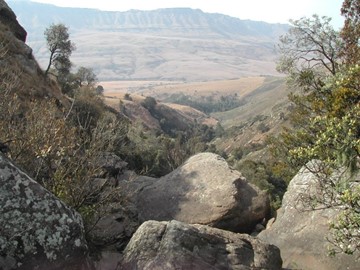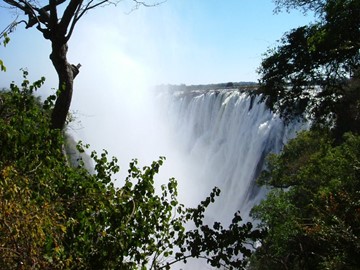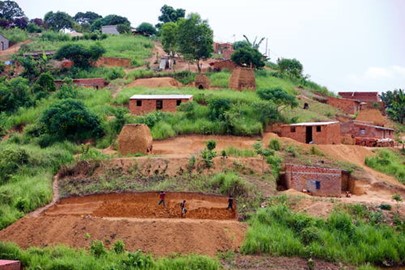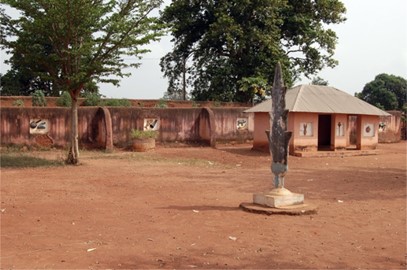region :: africa
Diy Gid Biy
The Diy-Gid-Biy Cultural Landscape, inscribed on UNESCO’s World Heritage List in July 2025, is a remarkable archaeological site in Cameroon’s Mandara Mountains, featuring 16 dry stone structures, including terraces and platforms, dating from the 12th to 17th centuries. Named “place of chiefly residence” in the Mafa language, these sites, built by ancestors of the local Mafa people, served various ceremonial, residential, and agricultural purposes. Despite being uninhabited today, the landscape remains spiri... Read More
Mount Mulanje
The Mount Mulanje Cultural Landscape, inscribed on UNESCO’s World Heritage List in July 2025, is a sacred and biodiverse site in southern Malawi, dominated by the majestic Mulanje Massif, including Sapitwa Peak, the highest in Central Africa at 3,002 meters. Revered as a dwelling place of gods, spirits, and ancestors, it holds deep spiritual significance for local communities who perform traditional rites there. The massif’s unique ecology, featuring the endangered Mulanje cedar and diverse flora and fauna,... Read More
Bijagós Archipelago
The Bijagós Archipelago, a UNESCO Biosphere Reserve in Guinea-Bissau, is a pristine cluster of over 80 islands off the West African coast, renowned for its rich biodiversity and unique cultural heritage. The islands feature diverse ecosystems, including mangroves, beaches, and tropical forests, supporting rare species like saltwater hippos and manatees. The local Bijagó people maintain traditional practices, with matriarchal social structures and sacred rituals, making the archipelago a vital cultural and e... Read More
Gola Tiwai
The Gola-Tiwai Complex, Sierra Leone’s first UNESCO World Heritage Site, encompasses the Gola Rainforest National Park and Tiwai Island Wildlife Sanctuary, forming a biodiversity hotspot within the Upper Guinean Forest. It hosts over 1,000 plant species, 113 endemic, and 55 mammals, including the endangered African forest elephant and pygmy hippopotamus, alongside 448 bird species like the white-necked rockfowl.
Royal Court of Tiébélé
The Royal Court of Tiébélé, a UNESCO World Heritage site in Burkina Faso, is a traditional Kassena architectural complex dating back to the 16th century. This unique settlement features intricately painted mud houses, adorned with symbolic geometric patterns by Kassena women, reflecting the community's rich cultural heritage. It serves as the residence of the Kassena king and royal family, preserving ancient traditions, social organization, and spiritual practices. Recognized in 2024, it stands as a testame... Read More
Melka Kunture and Balchit
Melka Kunture and Balchit, a UNESCO World Heritage site in Ethiopia’s Upper Awash Valley, is a cluster of prehistoric sites showcasing over 1.7 million years of human history. Located at 2,000–2,200 meters above sea level, it preserves archaeological and paleontological treasures, including fossils of Homo erectus, Homo heidelbergensis, and archaic Homo sapiens, alongside tools crafted from volcanic rocks like obsidian from Balchit. Spanning the Oldowan, Acheulean, Middle Stone Age, and Late Stone Age, the ... Read More
Gedi
The Historic Town and Archaeological Site of Gedi, a UNESCO World Heritage site in Kenya, is a medieval Swahili settlement on the Indian Ocean coast, flourishing between the 13th and 17th centuries. Nestled within a lush forest near Watamu, this abandoned coral-stone town features mosques, a palace, and intricately planned houses, reflecting a sophisticated urban culture tied to East African trade networks. Inscribed in July 2024, Gedi’s ruins, preserved amid baobab trees, offer insights into Swahili archit... Read More
Nelson Mandela Legacy Sites
The Nelson Mandela Legacy Sites, a UNESCO World Heritage site in South Africa inscribed in July 2024, comprise 14 locations across four provinces, honoring the nation’s struggle for human rights, liberation, and reconciliation. Key sites include the Union Buildings in Pretoria, where Mandela was inaugurated as the first Black president in 1994, and Constitution Hill in Johannesburg, a former prison turned symbol of democracy. Reflecting events like the Sharpeville Massacre and the anti-apartheid movement, t... Read More
Pleistocene Occupation Sites
The Pleistocene Occupation Sites, a UNESCO World Heritage site in South Africa inscribed in July 2024, consist of three archaeological locations—Diepkloof Rock Shelter, Pinnacle Point Site Complex, and Sibhudu Cave—in the Western Cape and KwaZulu-Natal provinces. Spanning 162,000 years, these sites offer the most diverse and well-preserved evidence of modern human behavior’s emergence, including advanced tools, engraved ostrich eggshells, and symbolic art. Recognized as South Africa’s 11th UNESCO site, they... Read More
Memorial sites of the Rwanda Genocide
The Memorial Sites of the Rwanda Genocide, a UNESCO World Heritage site inscribed in September 2023, consist of four key locations in Rwanda—Murambi, Nyamata, Kigali, and Bisesero—commemorating the 1994 genocide that claimed over 800,000 lives. These sites, including mass graves, churches turned killing grounds, and a resistance hill, preserve evidence of the atrocities with human remains and artifacts, serving as places of mourning and education. Rwanda’s fifth UNESCO listing, they stand as a stark reminde... Read More
Nyungwe National Park
Nyungwe National Park, a UNESCO World Heritage site in Rwanda inscribed in September 2023, spans 1,019 square kilometers of montane rainforest in the Albertine Rift, recognized as Rwanda’s fourth UNESCO listing. One of Africa’s oldest and most biodiverse forests, it harbors over 1,068 plant species, 13 primate species—including 500 chimpanzees—and rare birds like the great blue turaco, thriving at elevations up to 2,950 meters. Protected since 1933 and elevated to national park status in 2005, its pristine ... Read More
Bale Mountains National Park
Bale Mountains National Park, a UNESCO World Heritage site in Ethiopia inscribed in September 2023, spans 215,000 hectares in the southeastern highlands, 400 km from Addis Ababa. Renowned for its dramatic landscapes—volcanic peaks, Afro-alpine plateaus, and the vast Harenna Forest—it harbors exceptional biodiversity, including the endangered Ethiopian wolf, mountain nyala, and Bale monkey, alongside 1,660 plant species, 177 endemic to Ethiopia. As a vital water source for millions across East Africa, this p... Read More
Odzala Kokoua
Odzala-Kokoua, a UNESCO World Heritage site in the Republic of Congo, is a vast 13,546-square-kilometer national park in the Congo Basin, recognized in 2023 for its exceptional biodiversity and ecological significance. Established in 1935, it encompasses pristine rainforests, savannas, and saline clearings, hosting over 7,600 western lowland gorillas, 7,300 forest elephants, and Central Africa’s richest primate diversity. Managed by African Parks since 2010, this site, part of the world’s second-largest rai... Read More
Gedeo Cultural Landscape
The Gedeo Cultural Landscape, a UNESCO World Heritage site in Ethiopia, is a 46,717-hectare agroforestry region in the Gedeo Zone, recognized in 2023 for its sustainable farming traditions and cultural heritage. Nestled on the eastern escarpment of the Ethiopian Rift Valley, it features ancient enset and coffee cultivation, sacred forests, and over 1,000 megalithic stelae erected by the Gedeo people centuries ago. This biodiverse mosaic of terraced slopes and traditional villages showcases a harmonious blen... Read More
Sudanese Style Mosques
The Sudanese Style Mosques, a UNESCO World Heritage site in Côte d'Ivoire, recognized in 2021, are eight small adobe mosques in the northern towns of Tengréla, Kouto, Sorobango, Samatiguila, Nambira, Kong, and Kaouara. Dating from the 17th to 19th centuries, they feature earthen construction with projecting timbers, buttresses topped with pottery or ostrich eggs, and tapered minarets, reflecting a Sudano-Sahelian style that originated in 14th-century Djenné, Mali. These well-preserved structures, born from ... Read More
Ivindo
Ivindo National Park, a UNESCO World Heritage site in Gabon, recognized in 2021, is a rainforest reserve in the country’s northeast, celebrated for its pristine biodiversity and dramatic landscapes. Home to rare species like forest elephants, western lowland gorillas, and the endangered slender-snouted crocodile, it features the stunning Kongou and Djidji waterfalls within the Ivindo River basin. This intact equatorial ecosystem, minimally impacted by human activity, showcases Gabon’s ecological richness an... Read More
Ferrous Metallurgy Sites
The Ferrous Metallurgy Sites, a UNESCO World Heritage site in Burkina Faso, recognized in 2019, are ancient iron production complexes spanning five locations, with the oldest at Douroula dating to the 8th century BCE. Featuring standing natural-draft furnaces, mines, and traces of dwellings, these sites showcase early smelting techniques and their evolution through the second millennium CE at Tiwêga, Yamané, Kindibo, and Békuy. They highlight Burkina Faso’s pioneering role in African metallurgy, preserving ... Read More
W Arly Pendjari
W-Arly-Pendjari, a UNESCO World Heritage site in Benin, Burkina Faso, and Niger, recognized in 1996 with expansions in 2017, is a vast savanna and forest complex across three countries, forming West Africa’s largest intact wilderness. Home to elephants, lions, and the last West African giraffes, its diverse ecosystems—woodlands, wetlands, and grasslands—reflect exceptional biodiversity amid a semi-arid region. This transnational site showcases the region’s natural heritage, preserved through cross-border co... Read More
Sangha Trinational
Sangha Trinational, a UNESCO World Heritage site in Cameroon, Central African Republic, and Congo, recognized in 2012, is a pristine rainforest spanning three countries in the Congo Basin, celebrated for its rich biodiversity. Home to gorillas, elephants, and rare forest species, its untouched woodlands, clearings, and rivers reflect a vital ecological hotspot. This transnational site showcases Central Africa’s natural heritage, preserved through cooperative conservation across borders in a remote wildernes... Read More
Mount Nimba
Mount Nimba, a UNESCO World Heritage site in Côte d'Ivoire and Guinea, recognized in 1981 and 1982, is a rugged mountain range rising from the West African savanna, renowned for its unique biodiversity and geological significance. Home to endemic species like the Nimba toad and chimpanzees that use stone tools, its forests and grasslands straddle a vital ecological frontier. This cross-border site reflects the region’s natural heritage, preserved despite mining threats, showcasing a rare blend of evolutiona... Read More
Stone Circles of Senegambia
The Stone Circles of Senegambia, a UNESCO World Heritage site in Gambia and Senegal, recognized in 2006, are over 1,000 megalithic circles across four sites, built between the 3rd century BCE and 16th century CE. Featuring laterite stone pillars arranged in rings, often near burial mounds, they reflect a mysterious ancient tradition of West African communities. This transnational site showcases the region’s archaeological heritage, offering a glimpse into a lost culture’s rituals and engineering skills.
Maloti Drakensberg
Maloti-Drakensberg, a UNESCO World Heritage site in Lesotho and South Africa, recognized in 2000 and extended in 2013, is a stunning mountain range blending dramatic peaks with rich cultural heritage. Its basalt cliffs and sandstone formations shelter thousands of San rock art sites, dating back over 4,000 years, alongside diverse flora and fauna like the bearded vulture. This transnational site reflects Southern Africa’s natural and artistic legacy, preserving a unique fusion of geology and human history.
Victoria Falls
Mosi-oa-Tunya / Victoria Falls, a UNESCO World Heritage site in Zambia and Zimbabwe, recognized in 1989, is one of the world’s largest waterfalls, formed by the Zambezi River plunging over a basalt plateau. Known as 'The Smoke That Thunders,' its mist-soaked gorges and rainforests support rare species like the African fish eagle. This transnational site reflects Southern Africa’s natural splendor, showcasing a breathtaking geological marvel preserved across borders.
Mbanza Kongo
Mbanza Kongo, a UNESCO World Heritage site in Angola, recognized in 2017, is the historic capital of the Kongo Kingdom, thriving from the 14th century until its decline in the 19th century. Its ruins—featuring royal graves, churches, and a sacred tree—reflect a blend of African traditions and Portuguese colonial influences after 1483. This site showcases Angola’s precolonial heritage, preserving the spiritual and political legacy of one of Central Africa’s most powerful kingdoms.
Royal Palaces of Abomey
The Royal Palaces of Abomey, a UNESCO World Heritage site in Benin, are a historic complex of earthen structures built by the Fon kings between the 17th and 19th centuries. Spanning 12 palaces, they feature intricate bas-reliefs and artifacts that narrate the kingdom’s history, culture, and power. Recognized by UNESCO in 1985, the site reflects the architectural ingenuity and political legacy of the Dahomey Kingdom. Despite past damage, it remains a striking symbol of Benin’s royal heritage.









